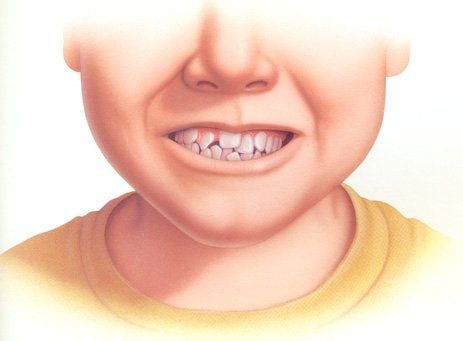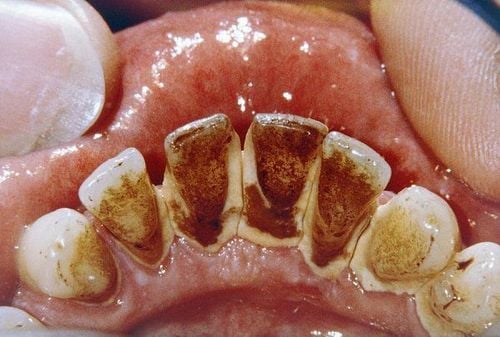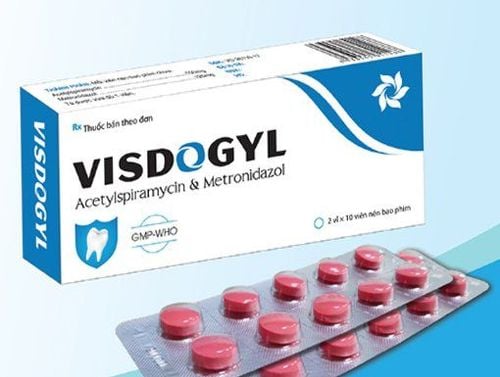This is an automatically translated article.
The article is written by Master, Doctor Lai Do Quyen - Doctor of Odonto-Stomatology - Facial - Interdisciplinary Department - Vinmec Times City International General Hospital
Purulent root inflammation is a sign of local or disseminated infection in the mouth. Purulent root inflammation often warns that your oral health is having a very serious problem and can cause unpredictable complications if not treated promptly.
1. What is purulent root inflammation?
Teeth include: the outermost layer is enamel, the middle layer is dentin, and a hollow in the middle of the tooth contains soft tissues including blood vessels, nerves and connective tissue called pulp. Blood vessels and nerves enter the tooth through an opening at the top of the root. That area is called the root of the tooth.
The root of a tooth is the part you can't see in the mouth, because the tooth root is located in a bone cavity called the alveolar bone and the outermost part that covers the alveolar bone is the gum or gum.
Purulent periodontitis is a condition in which the pulp or gums (gingiva) are attacked by bacteria, causing an infection, creating an abscess in the root area, around the root or in the gum area. If not treated in time, the inflamed root of the tooth with pus will seriously affect oral health, as well as seriously affect the health of the whole body, even life-threatening.
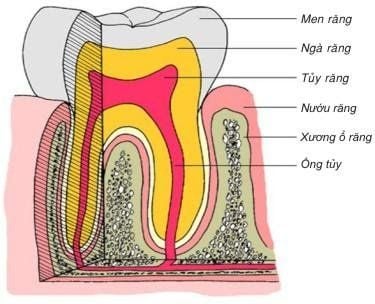
2. Causes of purulent root inflammation
There are 2 main causes of purulent root inflammation, including:
2.1 Periodontitis (periodontitis): Poor oral hygiene, food deposited in the interdental spaces, deep under the gums. do not remove all, do not regularly go to get tartar (scraping teeth), sharp objects pierce the gums such as toothpicks with toothpicks, ... are the causes of gingivitis (inflammation of the gums). When the gums are inflamed, you will see bad breath, gums that bleed easily when brushing or gums bleed naturally, swollen, red, enlarged gums that cover part of the crown.
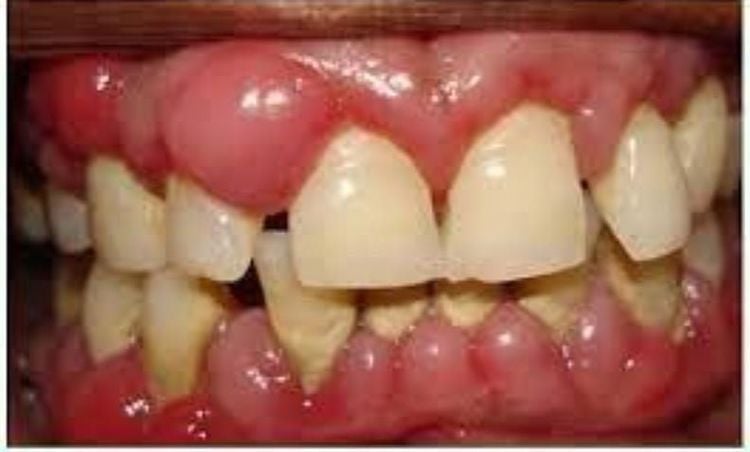
If gingivitis is not treated immediately, the gums bleed a lot, food between the teeth for a long time will create favorable conditions for bacteria to grow, causing infections in the gums. At this time, the roots of the teeth have pus, abscesses, and the bone surrounding the roots of the teeth is lost, and the gums recede, making the teeth loose. In this case, the disease changes from gingivitis to periodontitis.
If periodontal disease is not intervened early and has a regular treatment plan, it will lead to mass tooth loss, seriously affecting oral health and the whole body.

If the pulp inflammation persists for a long time, the infection spreads deep into the root area, leading to abscesses in the root and apex. This is the stage where the disease is already quite severe.
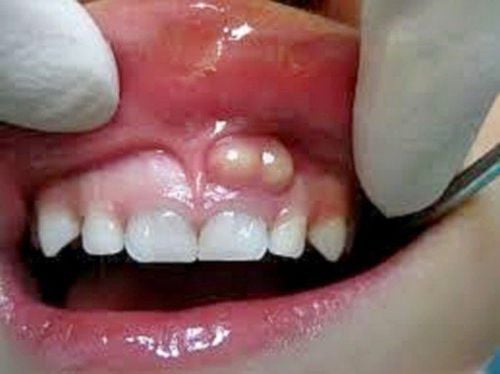
If the infection in the root of the tooth is not treated, over time the infection will spread to the entire root of the tooth, to other roots. Finally, it spreads to the gum that surrounds the tooth, creating a bone loss in the jawbone, the tooth is loose and has to be removed.
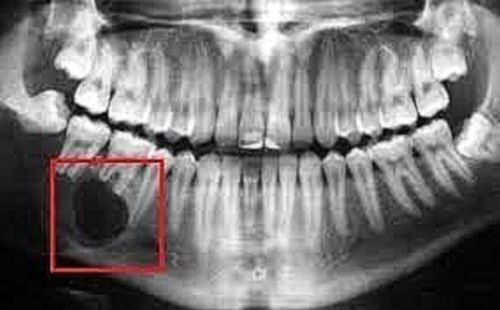
The most dangerous is that the bacteria in this pus pocket will move into the bloodstream, causing sepsis that can be life-threatening.
2.3 Other causes of purulent root inflammation Some cases such as misaligned teeth, occlusal trauma, drug use, endocrine, diabetes, poor resistance of the body... also have can cause purulent root inflammation.
3. Signs of purulent root inflammation
A common sign of purulent gingivitis is a toothache. Pain as if festering, pain spreads throughout the jaw, to the ears and neck. Pain increases when you chew or are unable to chew on the affected tooth.
Gums at the root of the tooth are swollen, tender, red, painful when pressed. The face on the side with the tooth is painful and swollen, the skin on the face is red and hot. Painful teeth are wobbly, there is a feeling that the painful teeth are protruding, and the teeth are discolored.
At this time there are also lymph nodes under the jaw, in the neck. Pain when pressing on the lymph nodes, fever, bad breath. When the mass of pus bursts on its own, you should feel less pain. There are raised nodules in the gums in the root area, pus may flow out when pressed. You don't feel pain, because the pus at the root is drained by a tunnel going from the pus pocket in the root area to the gums.
Gums are swollen, enlarged, soft, red, painful when pressed, easy to bleed, sometimes there is pus in the gum margin around the teeth.
4. How to effectively treat purulent root inflammation?
The best way to thoroughly treat purulent root inflammation is to see a dentist as soon as possible. At that time, the dentist will conduct a thorough examination to make an accurate diagnosis and have a specific treatment for each different disease.
The principles of treatment of purulent root infections are:
Isolate the infection with antibiotics. Eliminate or reduce signs of discomfort for you such as pain, fever, swelling... Removal of infection: the dentist will perform procedures to remove the source of inflammation when an infection occurs. was stable and safe to do the tricks. Procedures to remove the infection include:
Draining the pus mass (incision of the abscess): the dentist will make a small cut at the site of the pus-filled swelling to drain the pus. Take foreign bodies, if any, such as bones, bamboo toothpicks, etc., stuck in the gums. Treatment of periodontitis: take tartar, scrape away the dirt around the root and under the gums... Root canal treatment: the dentist will remove all the pulp, the hollow part containing the pulp in the middle of the tooth is cleaned. thoroughly and sealed before the teeth are sealed and covered with porcelain crowns. Root canal removal: The dentist will do a small procedure to remove the infection in the root of the tooth. Extraction: teeth must be extracted when the inflammation is too severe, the tooth is badly damaged and cannot be kept. At that time, the dentist will extract the tooth and dredge up the infected area deep in the bone. Dentures will be made when healing after tooth extraction goes well. Sometimes the inflammation is too severe, the infection causes large cysts in the bone, spreading to other teeth causing widespread damage. The treatment is not only limited to the cause tooth, but also requires root treatment, removal of all cysts, treatment or extraction of related teeth. At that time, the treatment will be much more complicated, sometimes impossible to fix. Eliminate the cause of the disease such as grinding orthodontics, straightening teeth, adjusting or changing drugs for the whole body, good blood sugar control... Post-treatment follow-up is also very important, you should adhere to it. Dentist's advice to avoid recurrence.
5. How to prevent purulent periodontitis?
You should take good care of your teeth every day by brushing properly at least 2 times a day, using dental floss instead of toothpicks to remove food debris stuck between your teeth, using water Rinse your mouth with salt after each meal to help keep your mouth clean.
Have a suitable diet for teeth. Limit foods high in sugar or high in acidity. Should add calcium, vitamins ... for teeth from natural foods such as eggs, beans, milk, mushrooms... Stay away from foods that are too hot, too cold or too spicy, because it is easy to make. tooth damage.
You should go to the doctor and get tartar every 6 months. Teeth will be examined and treated promptly if any disease is detected. When you notice that the root of your tooth has pus, you should promptly go to the dentist for the most thorough and effective treatment by the dentist. dental chair KAVO (Germany), camera at the tooth chair, panorama machine from Gendex, X-ray machine in situ, Phosphorus film scanner from Gendex, Dently ultrasound machine, Radii Plus Australia teeth whitening forging, endodontic machine , a machine measuring the length of the canal.... helps to provide maximum support in the examination and implementation of all dental techniques.
In addition to modern equipment and machines, all examination and treatment procedures are performed by a team of doctors with many years of experience. Therefore, customers can be assured of the quality when choosing a hospital.
Please dial HOTLINE for more information or register for an appointment HERE. Download MyVinmec app to make appointments faster and to manage your bookings easily.






